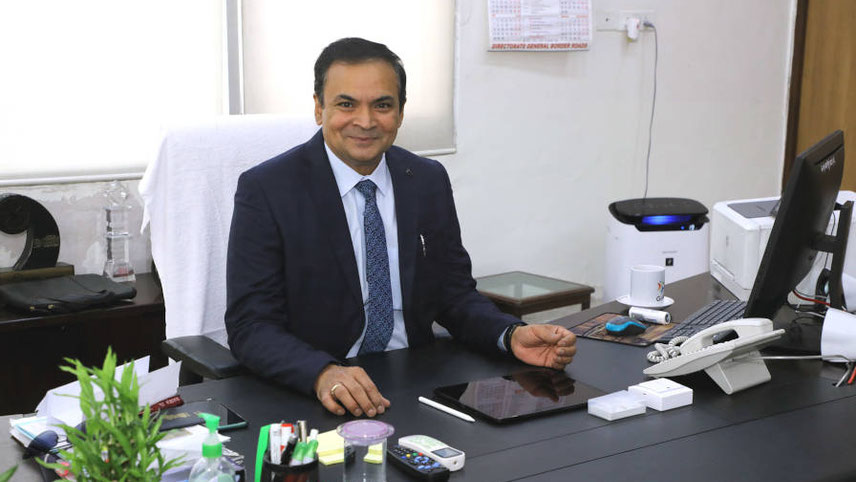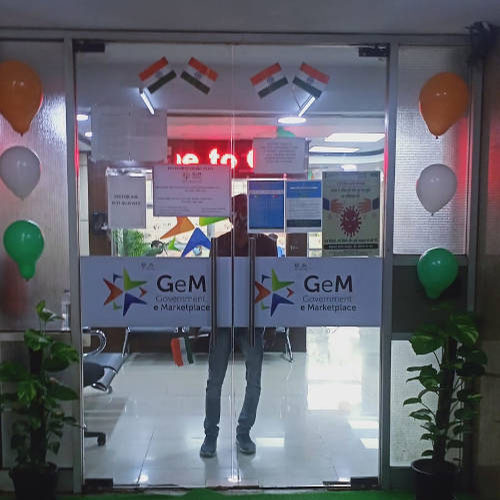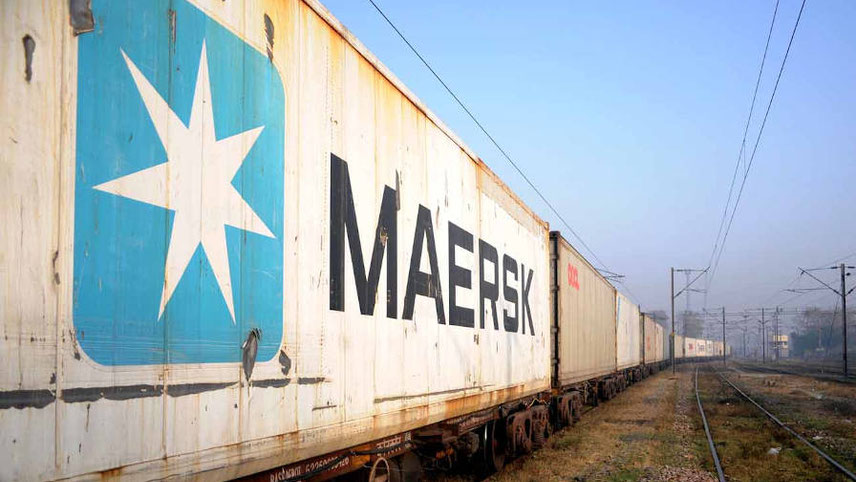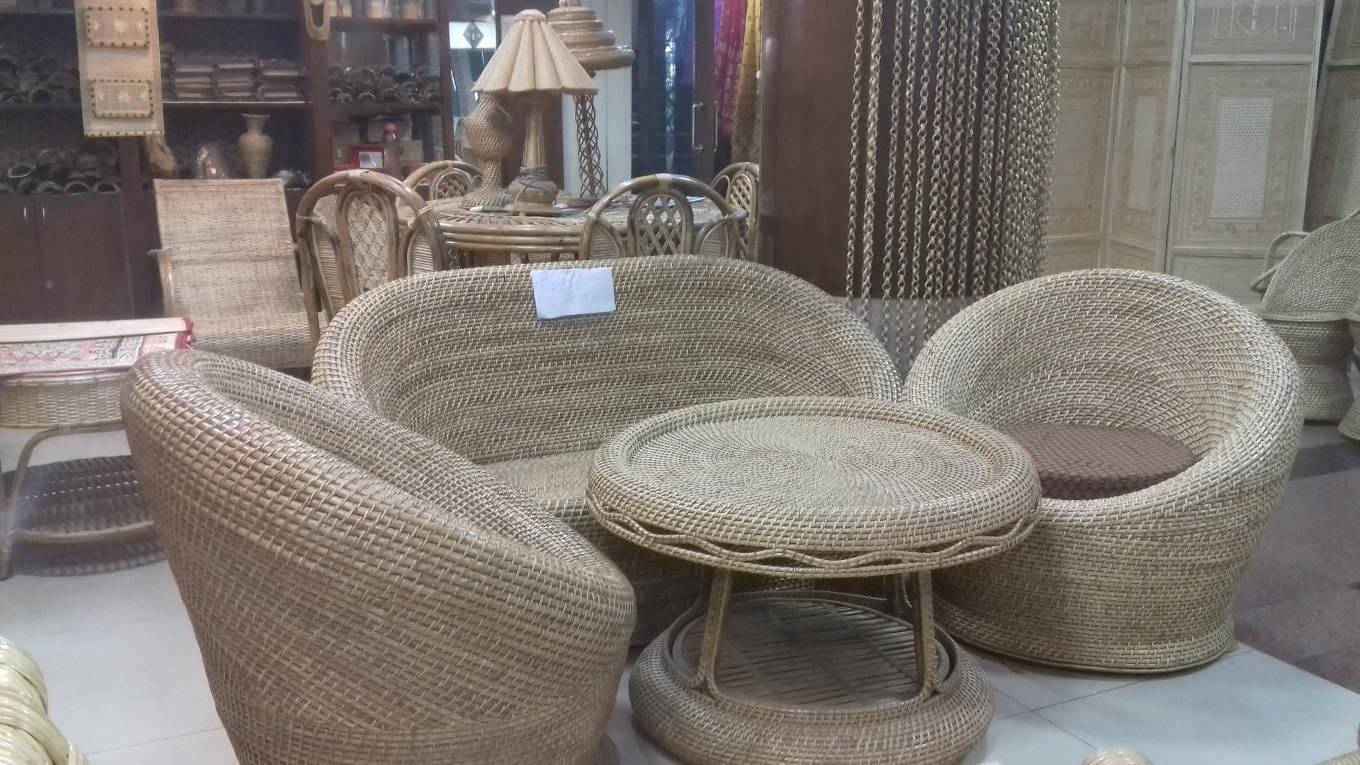-

Singh: focus on consolidation
The GMV jump last year was a staggering 70 per cent vis-à-vis the previous year figure of around Rs23,000 crore. In dollar terms, it amounted close to $5 billion which puts GeM in the league of leading marketplaces even though it is the youngest among them and has a different line of operation. According to a market study, Flipkart (along with Myntra) had clocked a GMV of $13 billion in 2020 whereas total transactions on Amazon India had stood in the vicinity of $10 billion.
Working under the aegis of the Ministry of Commerce and closely monitored by the PMO (within government circles, the theory is: GeM is one of the pet projects of Prime Minister Narendra Modi), GeM inherently carries the promise of supporting ‘Make in India’ and ‘Atmanirbhar Bharat’ strategic cornerstones of the current regime. And, therefore, there is a pronounced commitment to pave the way for the larger entry of seller groups like MSEs, start-ups, Women SHGs, tribal sellers, etc. Prashant Singh admits that contribution from segments like Women SHGs or tribal sellers is still low but when it comes to MSEs, their share is on the rise.
According to statics furnished by GeM, around seven lakh MSE sellers today have a hefty share of ‘over 56 per cent of the total order value on GeM . The number of MSEs registered on the GeM platform has increased by over 62 per cent since the last FY (2019-20). On a cumulative basis, since its inception in 2017, GeM has facilitated 67.27 lakh orders worth Rs1,11,113 crore from 18.85 lakh registered sellers and service providers for 52,275 government buyers.’
GeM, as a marketplace, had started solely with goods offerings. But it has slowly introduced the services category and according to Singh, this offering is picking up big time. “Today, we are offering 180 kinds of services through our portal and the growth in this segment is at a more rapid pace than goods,” Singh says. The end users from the PSU side say addition of a services vertical has significantly added to the appeal of the platform. “In recent times, they have been making an effort to make the services vertical more robust. This is a step in the right direction, taking them closer to becoming a unified procurement platform which the government would want them to be,” says a senior official of a leading Delhi-headquartered PSU.
The obvious reference here is Finance Minister Nirmala Sitharaman’s budget speech last year. “GeM is moving ahead to create a unified procurement system in the country for providing a single platform for procurement of goods, services and works. It offers a great opportunity for medium, small and micro enterprises,” she had then said.
Addition to the base platform
A close examination of transaction trends on GeM clearly reflects the fact that the platform today has a bunch of goods and services which are driving the show. On the goods side, major items include utility vehicles, carbon steel coated line pipes, desktop computers and even buses and bicycles. Its services portfolio is mainly driven by human resource outsourcing, security manpower service, monthly basis transportation hiring – both passengers and goods, and sanitation service hiring. According to Singh, in a cumulative sense, the platform currently has around 2,000 SKUs (including services functionalities) and there will be further additions of around 200 SKUs this year.
-

Kandpal: fintech-like offering gets ready
But it’s not the issue of mere additions in the goods and services basket (targeted to deliver a business of Rs30,000 crore alone this year) which is propelling transactions on GeM. Its growing scale could well also be reflective of consistent additions in new offerings meant more for making a qualitative difference for the stakeholders.
For instance, last year, the MSME Ministry launched a new Udyam form for registration of MSMEs on its portal and it has a provision to take consent from businesses for auto-registration on the GeM portal. For this, GeM has operationalised API integration with Udyam Registration databases. This move is believed to have helped it further in endearing itself with MSMe customers.
In order to attract and support start-ups, the platform runs a specific promotional programme called Startup Runway. It is believed to have nearly 10,000 start-ups as part of its ecosystem with scores of them enlisting their innovative products on the Runway page. Forward auction by government departments has been added to the platform.
The platform, interestingly, is now also taking a position in the fast-growing fintech space. Last month, it rolled out a service called GeMSAHAY for helping MSMEs with loans, mainly to meet their working capital requirements. The loans will be granted against the work order obtained from a buyer on GeM. “It is services like these which will give GeM a cutting edge going ahead. They can make a major mark in this arena with the loan against work order generating from their own platform differentiating them from others in the fray,” says Sateesh Meena, Senior Forecast Analyst, Forrester.
“This indeed could evolve as a major USP for them and can be harnessed to the hilt. It’s like you have created a business opportunity for them and then also supporting them with immediate capital support. And you are doing this for a section which is not looked at favourably for credit lending,” concurs a senior official of a leading fintech firm who did not wish to be named.
The fintech-like offering, however, is barely a month old. “In the first month, we have facilitated credit lending worth Rs24 lakhs covering 76 deals. The loan amount has ranged from Rs300 to Rs4 lakh. We are almost doing it on a pilot basis and are convinced that this would evolve as one of the leading functional verticals for us in the medium term,” emphasises Rajeev Kandpal, CFO of GeM.
“The two lending agencies which have already signed up are Ugro Finance and ICICI Bank. And Bank of Baroda and Canara Bank are expected to soon become prominent stakeholders of our GeMSAHAY programme,” he further adds. For this initiative, GeM has collaborated with the Indian Software Product Industry Round Table (iSPIRT), the noted non-profit tech think tank.
New catalysts
Having created a base structure, Singh and his team are keen to put the growth of the platform in top gear. According to Singh, GeM this year (2021-22) alone is likely to touch the GMV mark of over Rs1 lakh crore or around $13-14 billion and then double to Rs2 lakh crore or over $25 billion next year (2022-23). Simply put, this astronomical jump would put the platform in a different operational stratosphere altogether.
“These numbers may look too big but can be achieved. The total government led procurement in India is over Rs7.5 lakh crore and GeM till the last fiscal end had touched only 5 per cent of it. So there is a huge scope,” says Bishen while pointing at transaction numbers of leading public procurement platforms.
-

If GeM seeks PE support now, it would become a unicorn after the first series
The world’s biggest platform in this sphere, South Korea’s KONEPS has a current GMV base of over $60 billion and Singapore’s GeBIZ has now reached close to a $20 billion annual transaction trajectory. While these platforms have been in existence for quite some time (KONEPS is two decades old and operates in six countries), GeM is a relatively new entrant but has managed to make it to the list of the top five global players in the public procurement e-marketplace list.
For the five-time jump in the next two years over the current base, GeM is pinning its hopes in two major catalysts added to its fold – one of which is a new vertical altogether. But in the near run, it is the possible integration of Indian Railways E-procurement System (IREPS) which is slated to make a big difference. Indian Railways’ current procurement bill on goods for its operations is in the range of Rs70,000 crore and GeM wishes to garner a major part of it going ahead.
“Currently the railways are transacting on GeM in common goods and services. This year, their transaction on GeM for common goods will be close to Rs3,000 crore as against Rs1,200 crore last year. On the railways specific goods and services is a huge chunk, and we are attempting integration with IREPS. It’s a complex system but 50 per cent of the work has been completed. We are expecting a major increase in our business from this segment,” underlines Singh.
And then comes the big idea of integrating a new vertical in addition to its growing goods and services pillars – work contracts of leading engineering and infrastructure PSUs. “The FM in last year’s budget had said that GeM should be a unified procurement platform for goods, services and works and we are preparing for what could possibly be the next major leap,” Singh says.
An exercise in the making for quite some time internally at GeM, the effort involves analysing a humungous amount of work contract tenders while trying to standardise the entire procedure. Singh says the team working on it is now ready with basic analysis and GeM will be making a formal proposal to the Ministry of Commerce next month. In the best case scenario, the vertical is likely to take off before the end of the fiscal and will go full steam ahead during 2022-23.
“As and when it happens, this will make GeM a holistic platform for entities like us. Along with railways integration, a dedicated work contract tendering vertical will put GeM in a different league altogether,” says the senior PSU official quoted above.
In the near run, there is a strong possibility of the addition of some smaller catalysts too – not exactly new but a rather logical extension of the existing base. For instance, addition of a bunch of Geographical Indication (GI) products. “We are now trying to attract GI tag products. We have identified about 372 items which includes black rice from Manipur, Kanjivaram sarees, etc. There are about 5,000 authorised sellers for this category of products,” says Singh.
-
GeM is moving ahead to create a unified procurement system in the country for providing a single platform for procurement of goods, services and works. It offers a great opportunity for medium, small and micro enterprises
Fixing the glitches
Even as GeM has attained a sizeable scale and has garnered about 5 per cent of the total government procurement which it is promising to enhance significantly in times to come, various theories doing the round in the market tend to emphasise that it is not as friendly to sellers as GeM officials would like us to believe. “Their on-boarding charges are very high – Rs5,000 for every registration and then Rs10,000 for registration of every product,” a senior office bearer of a leading SME association says, requesting anonymity.
Point this out to Singh and his team and they immediately deny it while admitting that there have been serious misconceptions about GeM’s operational modalities in the marketplace. For instance, there have been many instances in the past when GeM had to send strong messages through its social media tools that no consultant has been authorised to facilitate registration with the platform.
“On registration charges, I would like to categorically state that we don’t demand anything at all for on-boarding. It is totally free. But in the past we noticed the presence of many players who were quoting at abysmally low prices and spoiling the transaction. So, in order to bring in discipline, we took approval from the department of expenditure to charge something called caution money,” Singh emphasises. There are three slabs of caution money, starting at Rs5,000 and it is not counted as GeM revenue but rather placed in a separate account.
“The moment a seller defaults (refusing to supply agreed goods), this money is forfeited and brought to the GeM kitty,” he adds. The seller sections comprising tribals, women self-help groups, etc are exempted from depositing caution money. But if an exempted seller defaults on GeM, then he will have to pay caution money if he intends to rejoin the platform. “We are a strictly not for profit organisation and we do not count caution money as our earning. 98 per cent of the sellers on our platform take advantage of some exemption. Our revenue comes from a small fee levied on every successful transaction in different grades or slabs,” explains Kandpal. For instance, the charge for the Rs5 lakh to Rs50 crore slab broadly works out in the range of 0.5 per cent.
Meanwhile, end-users also point at operational glitches on other fronts. “A critical element of any marketplace is the seamless experience it provides in terms of speed and connectivity with the other stakeholders. But GeM often turns out to be frustratingly slow. In comparison to the likes of Amazon, our association members often complain it has a primitive structure,” says Amit Bhardwaj, Secretary General, Federation of Indian MSMEs (FISME).
According to Chandrakant Salunkhe, founder and President, SME Chamber of India, the platform is not fulfilling its promise of inclusivity. “The intentions of GeM are good but currently it is being dominated by sellers in the urban pockets. There should definitely be more opportunity for sellers from far-flung places in actual transaction. Plus, it should have a better redressal mechanism within the system as well as improved functionalities like a well-evolved rating system,” says he.
Bring the inclusivity shortfall point to the notice of Singh and he says it is in the list of gaps to be plugged urgently. “The number of small sellers is growing. But not to the extent, we would have expected. We are waiting for Covid to stabilise. After that we will try to reach out to the people and try to understand how it can be enhanced.”
Bringing transparency to mammoth public procurement transactions (conventionally believed to be major source of corruption) and saving a substantial amount of money for the government is another major promise of GeM. A recent World Bank study seems to have emboldened government machinery backing GeM as it says that due to procurement through this platform, government departments have saved monies to the tune of Rs10,000 crore since 2017 (out of total transactions of Rs1,11,000 crore). According to the study, 9.75 per cent saving is quite possible for buyers on the basis of median pricing on GeM.
-

Railways’ procurement integration to provide a major boost to GeM
In the marketplace, however, a new perception pertaining to GeM functioning underlines that with the basic platform stabilising and a sizeable chunk of regular stakeholders getting hooked on to it, a sellers and preferred vendors nexus has begun evolving. “In a structured platform like this, such cartelisation may happen if not checked properly. This is corruption of a different kind,” says Bisen.
When informed about this the GeM top brass assert the platform is graduating to a more technologically advanced level (there is a strong buzz about the possible launch of GeM 5.0 later this year). “We have decided to harness technology further, particularly Artificial Intelligence in a big way. We have joined hands with NEC India to develop advanced business intelligence and analytics for us. We are sitting on a mountain of data. And we have a system of detecting the fraud or collusion happening between buyers and sellers. This will be increased with AI enabled features coming our way,” he explains. Apart from NEC, GeM has also engaged consultancy firms like Ernst & Young (advising on security aspects as well as the services vertical) as well as Boston Consulting for strategic advisory services.
Considering its expanding ambit, some sellers and analysts are suggesting inclusion of major corporate groups on its portal to enlist their tenders and make purchases. “This would be a major plus. In a government backed platform, payment cycles would be streamlined and strictly followed, which is good for small sellers,” points out Salunkhe.
According to Singh, this idea hasn’t taken any concrete shape as of now even as suggestions have poured in from several quarters. In the same breath, however, he points at another possibility in the medium to long run – consultancy opportunity for GeM in other countries, something that KONPES of Korea has done so successfully. “The World Bank has put us in touch with some African countries and also the Philippines where they are planning a similar kind of platform. But it will take some time for this business line to evolve considering our present focus to consolidate and add more segments and verticals,” he explains.
Meanwhile, the top brass also points to a major distinction which GeM is likely to notch this fiscal. “Operationally, we are all set to break even this year with a projected earning of Rs300 crore (on a GMV of over Rs1 lakh crore) which would deliver profits in the range of Rs50 crore. In 2020-2021, we had earned Rs111 crore, incurring a loss of Rs4 crore,” says Rajeev. In a business where cash burning and mounting losses are more of a regular trend than an exception, being in the black zone will certainly be counted as an additional plus factor for GeM.






































